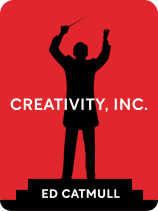

This article is an excerpt from the Shortform book guide to "Creativity, Inc." by Ed Catmull. Shortform has the world's best summaries and analyses of books you should be reading.
Like this article? Sign up for a free trial here .
What is the relationship between George Lucas and Pixar? Why did George Lucas sell Pixar?
For George Lucas, Pixar was part of his company Lucasfilm. Unfortunately, after his divorce, Lucasfilm was in a financially precarious position and Pixar was sold to Steve Jobs.
Keep reading for more about George Lucas, Pixar, and Lucasfilm.
Before George Lucas: Pixar as an Idea
After his time in graduate school, Catmull took a job at the New York Institute of Technology (NYIT) under the direction of Alex Schure. Schure believed computers were the way of the future and brought Catmull in to run a research lab dedicated to the computer animation process. Catmull began to assemble a team to work for him at the research lab. He had never been responsible for hiring and had to learn on his feet throughout the process. During his time with at NYIT, Catmull learned two valuable lessons:
- When searching for talent, put your ego aside and hire people who are smarter than you. Surrounding yourself with intelligent and ambitious people may be intimidating, but it’s the best way to create an efficient and innovative workforce. For example, at the beginning of his tenure at NYIT, Catmull interviewed a man named Alvy Ray Smith. He was charming and had a spectacular resume. Initially, Catmull was intimidated by him as he thought Smith might be a threat to his position. However, he hired him anyway. Smith became a close friend and colleague, and his work contributed to Pixar’s eventual success.
- Collaboration is an essential part of innovation. When you run into a serious obstacle, invite feedback from other sources to help you navigate the issue. For example, a challenge facing computer animators at the time was “motion blur.” Motion blur is the process of slightly blurring an animated image in motion to emulate the way the eye sees movement. Instead of relying on in-house advancements, Catmull solicited ideas from the community. The connections and advancements that the team made because of this outreach were crucial to the development and understanding of the concept.
While they made significant advancements with the NYIT research lab, both Catmull and Smith believed the innovations they discovered would mean nothing if they didn’t have creatives— people who work on the creative side of animation such as directors, animators, and modelers— working alongside them. They quietly reached out to studios such as Disney to promote their services and technology as the “next big thing.” However, these studios still didn’t see the value of computer animation and passed on their proposal.
Star Wars and Lucasfilm
Using technology in filmmaking wasn’t seen as important in Hollywood until 1977 with the release of an industry-changing blockbuster: Star Wars. While Lucas’s studio, Lucasfilm, used a lot of practical effects, Lucas saw the ways computers could improve the filmmaking process and create stunning new worlds. In 1979, Lucas created a computer division at Lucasfilm, his production studio, and hired Catmull to run the department. Thanks to George Lucas, Pixar was set in motion.
While at Lucasfilm, Catmull gave a group of Disney animators a tour of their facilities and showed off some of their technology. One of the animators, John Lasseter, was fascinated by the innovations and told Catmull that he had an idea for a film. The film, which he was planning on pitching to Disney, was called The Brave Little Toaster and would require the use of computer animation. He asked Catmull if they’d be able to work together to make this happen, and Catmull agreed.
After being let go from Disney for being “too ambitious,” Lasseter ran into Catmull at a conference and asked if he could join Lucasfilm. Catmull agreed and was thrilled to have a true “storyteller” on their team.

———End of Preview———
Like what you just read? Read the rest of the world's best book summary and analysis of Ed Catmull's "Creativity, Inc." at Shortform .
Here's what you'll find in our full Creativity, Inc. summary :
- How Pixar went from selling computers to successful animation studio
- What it takes to build a creative workplace culture
- Why George Lucas sold Pixar to Steve Jobs






